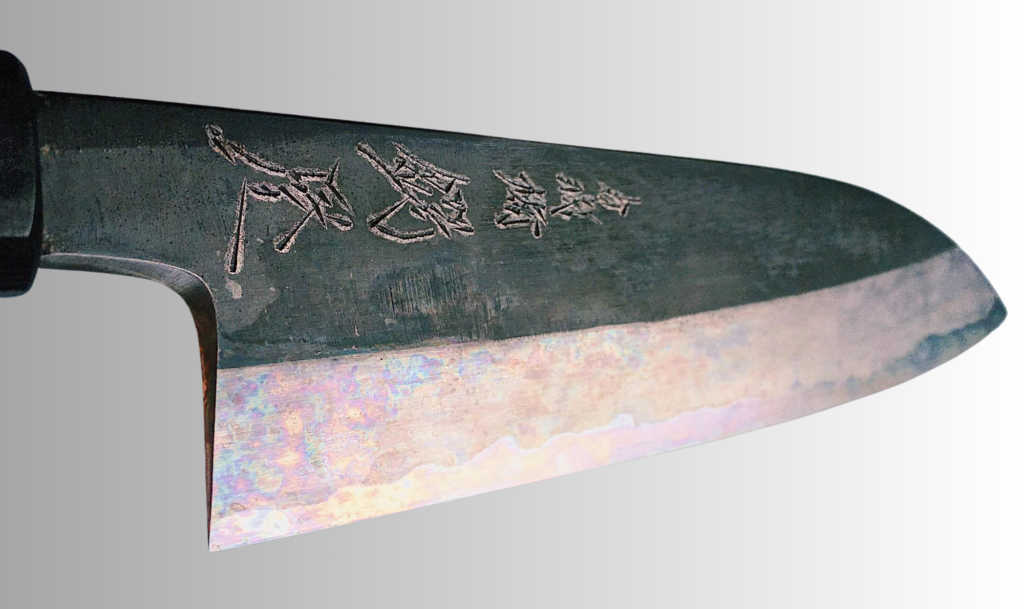Maintaining the condition of your knife is essential for both its longevity and performance. Despite having stainless cladding, the core and edges of the blade may still be susceptible to rust. To address this, we’ll outline a step-by-step process for cleaning and caring for your knife, along with a special Forced Patina Process to create a protective layer on the carbon steel components, making them less prone to rust and easier to maintain.
Precaution for Stainless Steel Cladding:
- Despite the stainless cladding, the core and edges of the blade may still be reactive and susceptible to rust.
- Extra care is needed to maintain the knife’s condition.
Cleaning Instructions:
- After each use, wash the knife by hand using regular dish soap.
- Rinse it thoroughly with hot water.
- Dry the knife immediately with a towel. Avoid using dishwashers as they can be harmful, especially for carbon steel knives.
- If you notice any orange rust, use the scrubby side of a sponge to remove it. Alternatively, try using a paste made of baking soda and water, or a rust removal product like Bar Keepers Friend.
Why Use the Forced Patina Process:
- The Forced Patina Process helps to create a protective layer on the knife’s carbon steel components, making them less prone to rust and easier to maintain.
- This process is particularly useful for those who may not have the time for regular maintenance of carbon steel knives.
Forced Patina Process: Materials Needed:
- Cheap pre-ground instant coffee
- A vessel (like a tall flower vase or double-stacked XL to-go coffee cups)
- Carbon steel knife
- Small sponge or dishcloth
Step-by-Step Instructions:
- Why: The Forced Patina Process helps to create a protective layer on the knife’s carbon steel components, making them less prone to rust and easier to maintain.
- Brew a strong pot of instant coffee and let it chill.
- Place the sponge or dishcloth at the bottom of the vessel.
- Gently place the knife in the vessel, ensuring the blade is submerged in the chilled coffee while the handle remains above the liquid.
- Let the knife soak in the coffee solution for at least 6-8 hours, preferably overnight, for the best results.
- After the soaking period, remove the knife from the coffee, wipe it down with a damp cloth, and thoroughly dry it.
- To restore the knife’s edge, hone and strop it as needed.
Optional Step (Recommended for Removing Coffee Smell):
- Cut up yellow onions and fry them to eliminate the coffee scent from the knife. These onions can also be used in cooking.
This process creates impressive results, particularly on certain types of steel like Shirogami #1 or #2, Kurouchi finished knives, and Aogami steels. However, note that it may slightly discolor the Kurouchi finish. Despite the transformation, it’s important to continue regular maintenance to keep the knife clean and rust-resistant.



